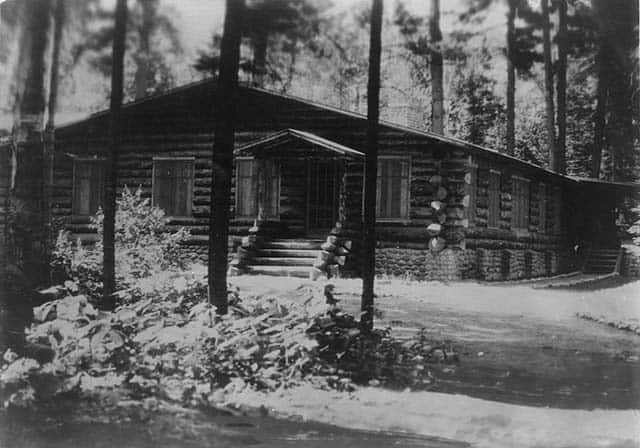
If you’ve paddled Basswood Lake to Crooked Lake, you’ve travelled an ancient route— favored by indigenous tribes and the Voyageurs, through a wild and peaceful chain of lakes, leading you to the spectacular Curtain Falls. Just barely visible over the falls are the remains of a rough stone foundation, dock footings, and stone steps to a portage. The next time you follow this route, stop for a moment and look for these remains— they are remnants of the vibrant resort community that flourished in the Boundary Waters from the 1930s to the 1950s.
The Changing Northwoods
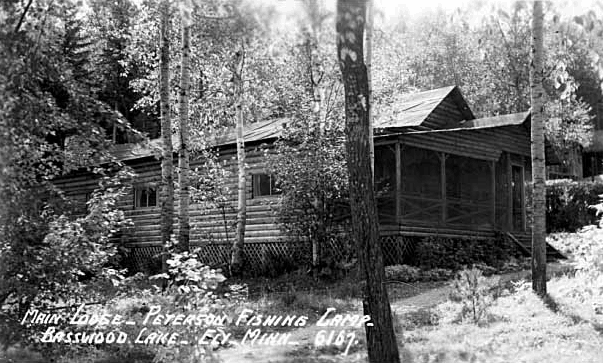
The 1900s-1920s signalled rapid change in the northwoods of Minnesota— railroads brought a booming logging industry, roads were built, and the population surged with the demand for lumber. Yet, while commercial interests gained speed, a public concern for protecting the border lakes from industry was also rising. The Superior National Forest was established in 1909, and with the passage of the Shipstead-Newton-Nolan Act in 1930, logging industries went into decline. The Act restricted logging within 400 feet of shorelines to protect water levels, and prohibited hydroelectric dams.
With most of the old growth timber depleted, and faced with an economic crisis, former loggers and trappers looked to tourism to sustain their way of life. The border lakes, now protected from industry, seemed to be the perfect place. A few determined families purchased land from the logging companies, felled trees, and hauled supplies across the frozen lakes to build rustic cabins. They gathered boats and gear, and with their indepth knowledge of the lakes, they developed the first ‘fishing camps’.
The camps grew quickly as word spread of unparalleled sport fishing and the extraordinary beauty of the northwoods. In the midst of a
post-war industrial boom, more people looked for a retreat from city life. The outdoors offered a healthy way to have fun with the family, and more families planned summer road trips as highways improved, and cars became more affordable.
‘The Playground of A Nation’
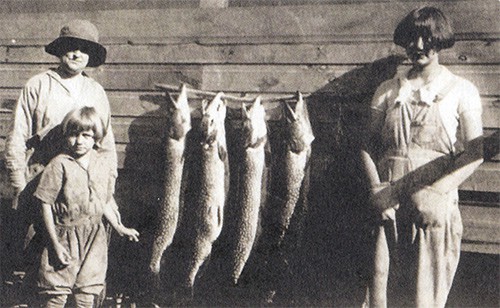
The early fishing camps became resorts and lodges, spreading outward from established trails to remote lakes including Basswood, Kekekabic, Crooked Lake, Seagull, Lac La Croix, and Knife, on both the Minnesota and Ontario sides of the border. By the early 1940s, there were more than 40 resorts in what is now the Boundary Waters Canoe Area Wilderness. In their prime, they collectively employed over 300 people annually, attracting thousands of visitors from across the U.S. each summer. These resorts reflected an outdoors-focused lifestyle. Most were centered around a handhewn main lodge that served as bunkhouse, dining hall, trading post, and recreation room, and might accommodate several families.
Dining halls were hung with trophy fish, deer, moose, and the occasional bear, and meals were often prepared by grizzled ex-logging camp cooks. Larger resorts offered the ‘American Plan’ in which meals were included in the price of lodging. Or, the thrifty guest could rent private ‘housekeeping cabins’ which were equipped with beds, linens, and wood-fired kitchens. A few resorts advertised electricity and other ‘modern conveniences’ including outhouses, running water, showers, and Finnish steam baths. To support the flourishing tourist trade,
Ely, Grand Marais, and other key entry points distributed colorful pamphlets advertising sport fishing, an outdoors lifestyle, and the health benefits of this new travel destination. Ely built an airport, golf course, and the town boomed with the new tourist trade.
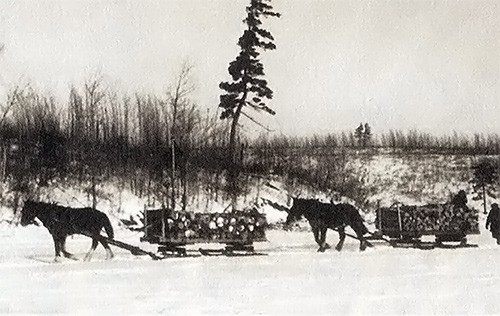
In addition to fishing, families enjoyed overnight canoe trips, swimming, organized games, boating, and hunting in season. The resorts offered gear and expert guided trips, either to the best fishing spots, or to overnight tent camps on distant lakes. Many Minnesotans remember fondly the long drives ‘up north’ and the cabins that they rented year after year, forming lasting friendships with the lodge owners and other families.
After WWII, airplane travel became a convenient way to get people quickly out of the cities, transporting them deep into the wilderness in a matter of hours. Ex-airforce pilots returned home to Minnesota and found employment as bush pilots. By the late 1940s, there were as many as 38 seaplane flights over Ely in one day, and air traffic had increased enough to make Ely the largest freshwater seaplane base in the continental U.S. At least 25 local planes flew regularly, in addition to flights from Chicago, Duluth, Minneapolis, Cleveland and St. Louis— and one savvy promoter boasted a non-stop flight from Florida to Crooked Lake. The resorts flourished with the increase in seaplane travel, and a few started their own seaplane service, offering flights daily in and out of Ely. The bush pilot became known as part daredevil, part adventure guide— and they knew the lakes like no-one else. They increased the popularity of the remote lakes— transporting thousands of visitors into the wilderness each year, and serving double duty as emergency medical airlifts and forest fire crews.
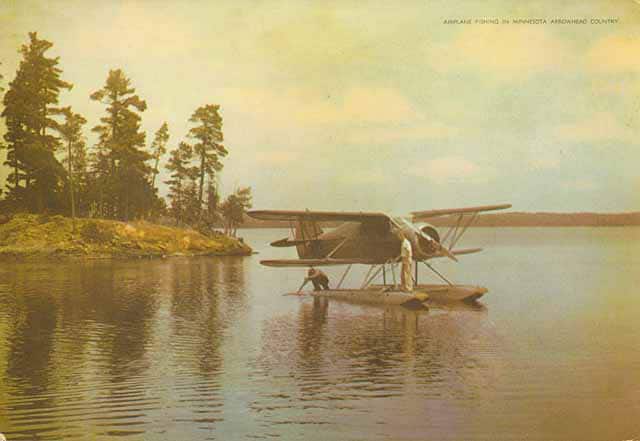
By the 1950s, resorts were spread throughout the roadless area from Lac La Croix to Grand Marais, from Burntside Lake to Saganaga— but for many of these resorts, the prosperous days were coming to an end.
To Be Continued— Part II of this story will appear in the Spring 2004 issue of Wilderness News.
This article was published in Wilderness News Fall 2003

